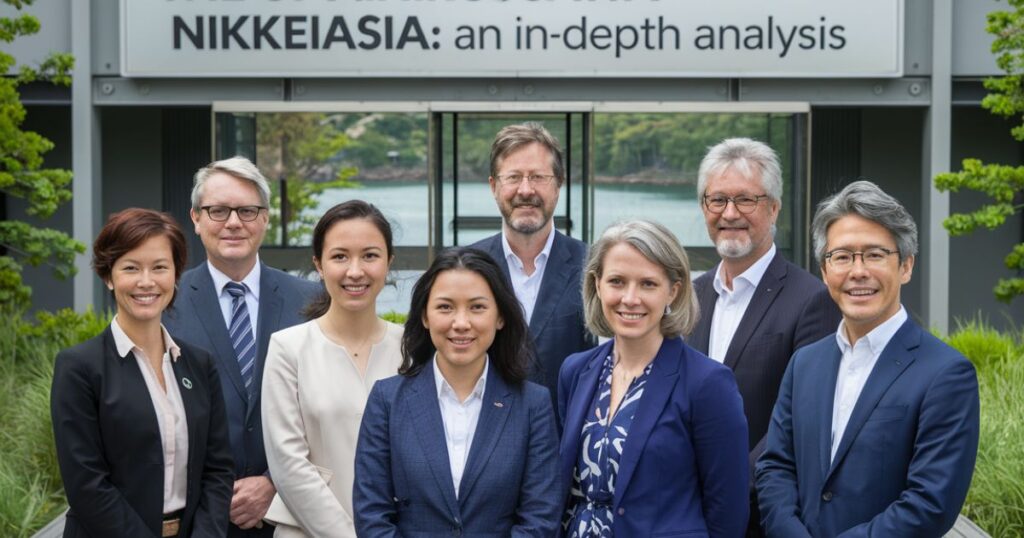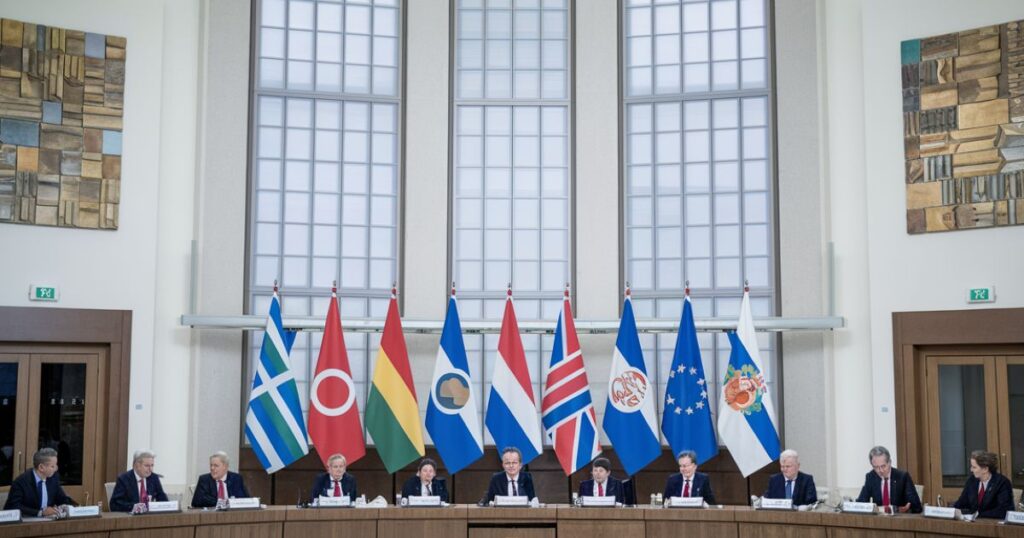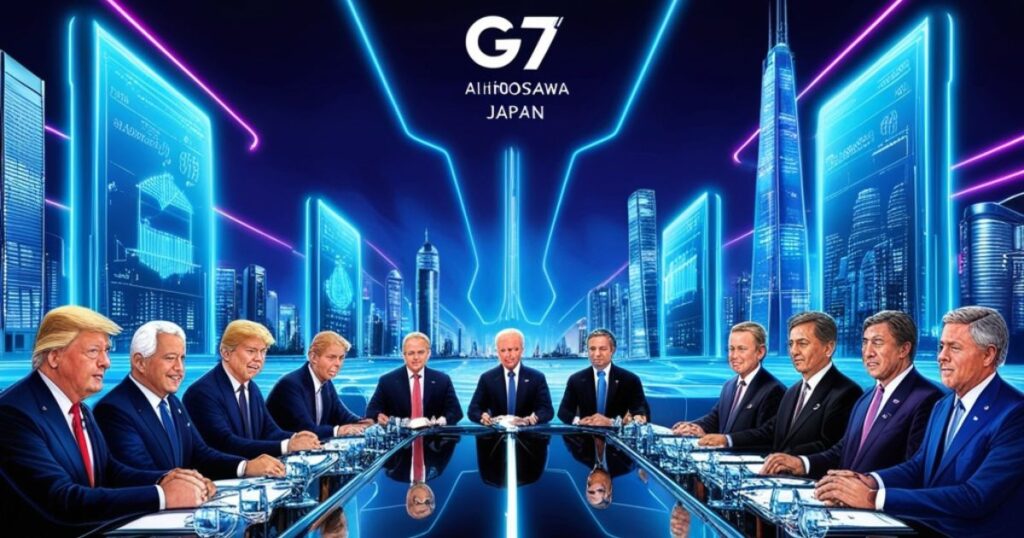In today’s rapidly evolving world, international cooperation has never been more crucial. At the forefront of this global dialogue stands the G7 Aihirosawa Nikkeiasia, a powerful convergence of economic minds and policy frameworks that’s reshaping how we approach global challenges.
For Americans, understanding this intricate web of relationships and decision-making processes is key to grasping our role on the world stage. Let’s dive into the depths of this fascinating topic and uncover how it’s molding the future of international economics and diplomacy.
Understanding the G7 Aihirosawa Nikkeiasia Framework
The G7, comprising the United States, Canada, the United Kingdom, France, Germany, Italy, and Japan, has long been a cornerstone of global economic discourse. But what happens when you add the innovative Aihirosawa concept and the dynamic Nikkeiasia perspective? You get a supercharged engine for tackling 21st-century challenges.
Aihirosawa isn’t a place you’ll find on a map. Instead, it’s a revolutionary approach to economic thinking that emphasizes sustainability, inclusivity, and long-term resilience. Picture it as the economic equivalent of renewable energy – a fresh, forward-thinking mindset that’s powering new solutions to age-old problems.
Nikkeiasia, on the other hand, represents the bridge between East and West. It’s not just about geography; it’s a philosophy that recognizes Asia’s growing influence in the global economy.
By incorporating this perspective, the G7 is adapting to a multipolar world where emerging economies like India, Brazil, and South Africa are playing increasingly significant roles.
When these elements converge in G7 discussions, magic happens. We’re talking about policy debates that don’t just scratch the surface but dive deep into the complex interplay of global markets, environmental concerns, and technological advancements.
Key Players and Their Roles

The G7 Aihirosawa Nikkeiasia isn’t just a meeting of minds; it’s a carefully orchestrated symphony of global leaders, each bringing their unique strengths to the table. Let’s break down the key players:
- United States: Often seen as the conductor, the U.S. brings its economic might and innovation prowess to the fore.
- Canada: A voice of reason, often bridging divides with its balanced approach to economic and environmental issues.
- United Kingdom: Post-Brexit, the UK is carving out a new role, emphasizing financial services and green technology.
- France: A champion of European unity and cultural perspectives in economic planning.
- Germany: The industrial powerhouse, pushing for technological advancement and sustainable manufacturing.
- Italy: Bringing Mediterranean flair and a focus on small and medium enterprises to the discussions.
- Japan: The Asian representative in the G7, crucial in integrating Nikkeiasia perspectives.
But the influence doesn’t stop there. The Aihirosawa concept acts as a guiding philosophy, pushing discussions towards more sustainable and inclusive economic models.
Meanwhile, Nikkeiasia brings the dynamism of Asian markets into sharp focus, ensuring that the G7 doesn’t lose sight of the shifting center of global economic gravity.
Hot Topics at the G7 Aihirosawa Nikkeiasia Summit
When the world’s economic titans gather under the banner of G7 Aihirosawa Nikkeiasia, the agenda is packed with issues that will shape our future. Let’s dive into the key topics that dominated recent discussions:
Post-Pandemic Economic Recovery
The COVID-19 pandemic threw the global economy into turmoil, and recovery has been uneven. The G7 Aihirosawa Nikkeiasia has been pivotal in crafting strategies to:
- Boost job creation in hard-hit sectors
- Support small businesses through innovative financing mechanisms
- Strengthen global supply chain resilience to prevent future shocks
Climate Change and Sustainable Development
With the clock ticking on climate action, the G7 is doubling down on green initiatives:
- Accelerating the transition to renewable energy sources
- Promoting investment in green technologies
- Setting ambitious carbon reduction targets for member nations
Global Trade Relations
In an era of rising protectionism, the G7 Aihirosawa Nikkeiasia is working to:
- Dismantle trade barriers exacerbated by the pandemic
- Create more equitable trade agreements that benefit developing nations
- Address the challenges posed by digital commerce and cryptocurrency
Digital Transformation and Cybersecurity
As our world becomes increasingly digital, the G7 is tackling:
- Bridging the global digital divide
- Enhancing cybersecurity cooperation among nations
- Regulating emerging technologies like AI and blockchain
These discussions aren’t just academic exercises. They’re shaping policies that will affect everything from the jobs available in your hometown to the price of goods at your local store.
For Americans, staying informed about these global dialogues is crucial to understanding the forces shaping our economic future.
Click For More Information: Demystifying Illness: what disease does sam elliott have
Implications of G7 Aihirosawa Nikkeiasia Decisions

The ripple effects of decisions made at G7 Aihirosawa Nikkeiasia summits are felt far and wide, especially in the United States. Let’s break down some of the key implications:
- Economic Stability: By coordinating fiscal and monetary policies, the G7 helps create a more stable global economic environment. This stability can lead to more predictable markets, benefiting American investors and businesses.
- Trade Dynamics: Decisions on trade relations can open new markets for American goods or, conversely, increase competition from foreign products. The push for more equitable trade practices could level the playing field for U.S. companies competing globally.
- Environmental Commitments: As the G7 doubles down on climate action, American industries may face pressure to adapt. However, this also opens up enormous opportunities in the green technology sector, where the U.S. can lead innovation.
- Technological Cooperation: Agreements on digital standards and cybersecurity can help protect American consumers and businesses from cyber threats while fostering an environment for tech innovation.
- Global Health Initiatives: Post-pandemic policies shaped by the G7 could influence everything from vaccine distribution to preparedness for future health crises, directly impacting public health in the U.S.
To illustrate the potential impact, let’s look at a hypothetical case study:
Case Study: Green Tech Boom in Detroit
Following a G7 Aihirosawa Nikkeiasia summit where members committed to accelerating electric vehicle adoption, the U.S. government introduced new incentives for EV manufacturing. This led to a revival of Detroit's auto industry, with several plants retooling to produce electric cars. Within two years, unemployment in the area dropped by 15%, and the city became a hub for green tech innovation.
This example showcases how global decisions can translate into local realities, reshaping economies and communities.
Criticisms and Controversies
While the G7 Aihirosawa Nikkeiasia framework has been lauded for its forward-thinking approach, it’s not without its critics. Some of the main points of contention include:
- Representation: Critics argue that the G7, even with the Nikkeiasia perspective, doesn’t adequately represent the global south. Countries like India, Brazil, and South Africa often feel sidelined in these high-level discussions.
- Implementation Gaps: There’s often a disconnect between the lofty goals set at summits and the actual implementation on the ground. Skeptics point to past climate commitments that have fallen short of targets.
- Power Dynamics: Some observers worry that the Aihirosawa concept, while innovative, might be used to maintain the economic status quo rather than truly revolutionizing global economic structures.
- Transparency: The closed-door nature of some G7 discussions has led to calls for greater transparency in decision-making processes.
These criticisms highlight the ongoing challenge of balancing diverse global interests within a framework primarily driven by advanced economies.
Future Prospects of the G7 Aihirosawa Nikkeiasia

As we look to the horizon, the G7 Aihirosawa Nikkeiasia stands at a crossroads. Its future will likely be shaped by several key factors:
- Evolving Power Dynamics: As countries like China and India continue to grow economically, the G7 may need to adapt its structure to remain relevant.
- Technological Disruption: The rapid pace of technological change will require the G7 to be more agile in its policy-making, potentially leading to more frequent summits or digital collaboration platforms.
- Climate Crisis: As the effects of climate change become more pronounced, the G7’s role in coordinating global environmental efforts will become increasingly critical.
- Inclusive Growth: The Aihirosawa concept’s emphasis on sustainability and inclusivity may lead to more focus on addressing global inequality and fostering development in emerging economies.
To visualize potential scenarios, consider this table of possible outcomes:
| Scenario | Description | Likelihood |
| Expansion | G7 expands to include more emerging economies | Moderate |
| Digital Transformation | G7 adopts a more flexible, tech-driven collaboration model | High |
| Climate Focus | Climate action becomes the primary driver of G7 policies | Very High |
| Decentralization | G7 influence wanes as regional economic blocs gain power | Low |
As these scenarios unfold, the United States will play a crucial role in shaping the G7 Aihirosawa Nikkeiasia’s direction. American leadership in areas like technological innovation and climate action could significantly influence global economic governance in the coming decades.
Click For More Information: Trulife Distribution Lawsuit
Conclusion
The G7 Aihirosawa Nikkeiasia represents a bold attempt to adapt centuries-old economic frameworks to the realities of our interconnected, rapidly changing world. For Americans, understanding this evolving landscape is crucial. It affects everything from the jobs available in our communities to the products on our store shelves and the air we breathe.
As we’ve explored, this framework isn’t perfect. It faces challenges in representation, implementation, and adapting to new global realities. However, its emphasis on sustainability, inclusivity, and bridging East and West offers a promising path forward in addressing some of our most pressing global challenges.
So, what can you do? Stay informed. Engage in discussions about global economic policies. Support initiatives that align with the sustainable, inclusive vision of Aihirosawa. And remember, in our interconnected world, what happens at a G7 summit can have real impacts right here at home.
The future of global economic cooperation is being written now, and the G7 Aihirosawa Nikkeiasia is holding the pen. It’s up to all of us to ensure that the story it tells is one of progress, sustainability, and shared prosperity.

Hello, I’m Henry, a committed writer at supersbusiness.com, where I specialize in Business, Finance, Real Estate, and News. My articles explore a wide range of topics, providing readers with insightful and engaging content. With a knack for simplifying complex ideas, I aim to make my writing accessible and informative for all. Stay informed on the latest trends and insights by following me on supersbusiness.com.

